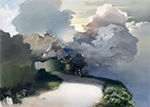
People and Movements
""You’re always there to catch me . . . when I fall."
Dancer in the Dark (2000)
Points
for Reflection
A Rhetoric of Film, chp. 5
- which of the various necessary roles involved in making a film appeals to you most?
- in light of the responsibilities Harrington defines for a second assistant cameraman (“loader”), does a modern production shot digitally require such an individual?
- can you identify the lingering influence of any of the major film movements on your favorite contemporary film directors? On Lars von Trier’s work?
- how does Neorealism differ from Cinéma Vérité?
- which gauge of film was being used most commonly in television and film in 1973, when The Rhetoric of Film was published?
- which do you prefer watching, a film dominated by: 1) hand-held shots without the use of Steadicam, 2) shots made with Steadicam, or, 3) shots made from fixed positions (tripods, etc.)?
- does von Trier ever employ oblique-angle shots?
- does natural outdoor light skew towards blue or yellow? What of artificial lighting employing fluorescent bulbs?
- do filmmakers today still use back projection when creating a process shot, or do they rely solely on green and blue screens?
- would you label any of your favorite filmmakers an auteur?

Landscape with Multitrip (1995)
Poul Anker Bech
Dr. Paul Marchbanks
pmarchba@calpoly.edu
![]()
